 So what’s a knot garden? Knot gardens first caught my eye when I was a kid and visited Mount Vernon, the home of George Washington. When I later visited England, I saw how our first president had carried on a long-standing tradition. Knot gardens, edged with tight growing shrubs like boxwood, wound across the property of kings and queens and lords and ladies. Sometimes herbs or flowers were planted inside the rows of shrubs, which twist and turn to form shapes that look like fancy knots. England’s Queen Elizabeth I enjoyed strolling through such gardens with her ladies-in-waiting. Certainly the queen’s knot gardens were among the finest in her day. In Washington DC, we Americans have a knot garden inside our National Arboretum, an outdoor museum of plants and trees. Small evergreens form the knot. Visitors stop to sniff the fragrant herbs planted both inside and outside the knot of evergreens. It can take years to establish a knot garden, but you can create an updated version that will grow in just one summer. All it takes is a little space, a variety of marigold plants, a digging tool, a bit of water-soluble fertilizer, and regular care. Plan your garden to be three feet by three feet. Look at knot gardens online for clues and make a simple design. Marigolds come in many colors, sizes, and shapes. Think about how tall and wide they’ll grow. Do you want tall flowers in the corners? Now plant your plants. Carefully pop the flowers from their packs and transplant them into roomy holes so they’ll grow well. Plant the inside garden first. Then move to the outside. At first your garden might look skimpy, but in a few weeks it will fill in. Mix fertilizer with water in your watering can and give the little plants a good drink. Marigolds are heavy feeders needing regular watering and fertilizer. Every few days, stick your fingers in the dirt to check for moisture. When the soil’s getting dry, it’s time to water— early in the morning or late in the day. Check this blog for more details! 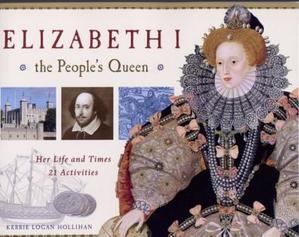 Kerrie Logan Hollihan's lively biography of one of England’s greatest monarchs includes a time line, online resources, and 21 activities to offer readers hands-on experiences with life in the Elizabethan Era. Kids can create costumes for the queen’s court, including a knight’s helmet, a neck ruff, and a cloak, play and sing a madrigal, create a 3-D map of an Elizabethan town, stitch a blackwork flower, design a family coat of arms, play a game of Nine Men’s Morris, grow a knot garden, and much more. Kerrie is a member of iNK's Authors on Call and is available for classroom programs through Field Trip Zoom, a terrific technology that requires only a computer, wifi, and a webcam. Click here to find out more. _______________________________ MLA 8 Citation
Hollihan, Kerrie Logan. "Knot Gardens." Nonfiction Minute, iNK Think Tank, 17 May 2018, www.nonfictionminute.org/the-nonfiction-minute/Knot-Gardens.
1 Comment
 Sweden had become the most powerful country in the north. In war after war it expanded its territory, but the King was not satisfied. “Build me a great warship,” he said, “reflecting the glory of our great nation.” Soon a ship was underway. It was going to be the most magnificent vessel of the century. After it was half done, the King came to inspect it. “Aha,” he ordered, “make it so high it towers over all other ships. And it should bristle with guns,” whereupon he left. When he came back the ship was almost finished. “Great!” exclaimed the King. “Looks good. How many cannons?” “Thirty-eight, 24-pound cannons, Your Majesty, and ten smaller ones.” “Pretty good. Why not add another ten big ones? And how many sculptures?” “About five hundred, Your Majesty, with fifty-two gilded lions.” “Very good. They call me the Lion of the North. So it’s befitting we have lots of them. Make it an even sixty.” After which he rushed off to another war. As more and more cannons were added and bigger lions were carved into the stern, some of the builders began to have misgivings. “This is madness,” muttered an experienced seaman. “The ship is getting top-heavy.” “Quiet,” said his superior. “His Majesty would not like this kind of talk.” So work continued. Then came the maiden voyage. It was a beautiful day in the nation’s capital, and all the citizens were out watching. What a splendid sight! Just look at those cannons, and ferocious lions! As the mighty ship headed for the open sea the crowd cheered. It was a glorious moment of patriotism and pride. Then came a small gust of wind. It caught the ship, making it lean heavily. Cannons broke loose, water gushed through the open gun ports. As the crowd watched, the ship keeled over and sank. Since the King was beyond reproach, no one was blamed for this colossal fiasco. But, of course, everyone knew. This is a true story. It happened in Stockholm in 1628. But this is not the end of it. In 1956, an amateur Swedish archaeologist set out to raise Vasa, the name of the ship. Step-by-step it was brought up and immaculately restored. The vessel is now on display in the Vasa Museum in central Stockholm, and admired by millions of visitors. A magnificent ship, with only one flaw. She couldn’t sail. 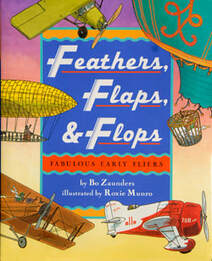 Feathers, Flaps & Flops, Fabulous Early Fliers Highlights the people who attempted to defy gravity by using imagination, dedication, and daring, from "Wrong Way Corrigan" who was supposed to fly to California but ended up in Ireland and Beryl Markham, who was the first woman in Africa to receive a commercial pilot's license to Bessie Coleman, a notorious African-American stunt pilot. Get a downloadable copy from the iNK Books & Media Store. Grades 3-5  Have you ever been asked to revise something that you wrote, but had trouble doing it? Maybe you didn’t know where to start? Maybe you thought you might actually make it worse than before? Maybe you thought it would be too hard? Believe me, I get it. When I sit down to revise, I am often filled with fears about doing it. Over the years, though, I’ve come up with three simple steps that help take the fear out of revision. Let’s see how to use them when revising the most important chunk of writing—the paragraph. When I revise a paragraph, my first step is to ask myself is “What’s this paragraph about?” Usually, I’ve already written a sentence that tells me. It’s called a thesis sentence. A thesis sentence can be something kind of loose such as “Skateboards rock,” or it can be specific such as “Yesterday, I had my best skateboard ride ever.” The point is that this sentence tells me what the rest of my paragraph needs to be about. When revising, I find it helpful to underline my thesis sentence. Step Two is to make sure that my paragraph makes sense. Here, I check that every sentence helps prove or explain why my thesis sentence is true. I also make sure that none of my sentences are confusing. If they are, I revise them so they are easier to understand. I especially look for sentences that don’t really say anything, such as “Skateboards are, like, the best.” I’d either delete this sentence, or improve it to something like, “Skateboards provide great exercise.” After my paragraph makes sense, I move on to Step Three: making my paragraph more fun. I replace boring verbs with more exciting ones. Instead of saying “My skateboard was fast,” I might write, “My skateboard hurtled down the ramp.” I put in better descriptions. I also might crack a joke, or throw in a simile such as “My skateboard carried me like a four-wheeled chariot”—or a metaphor, “My board launched me into the stratosphere.” When tackling revision, I recommend having someone else read your writing aloud. That helps you spot problems. Even so, I don’t always nail a revision the first—or even the tenth—time. I revised this nonfiction minute more than a dozen times! The important thing is to not let your fears overwhelm you. Remember that revision is simply the process of you saying what you want to say.  What happens when a bestselling nonfiction children's book author pairs up with a nationally known writing teacher to discuss revision strategies? Magic. Sneed B. Collard III and Vicki Spandel blow the roof off everything you thought you knew about teaching nonfiction writing and the purposes for revision. Dozens of strategy lessons pulled from Sneed's professional writing experience followed by Vicki's classroom-savvy tips and exercises give you the nuts and bolts of teaching revision to make nonfiction writing more meaningful, useful, and enjoyable for the reader. Using a "big-to-small" process of revision, from Big Picture ideas down to individual words, Sneed and Vicki demystify revision and help students become clear, persuasive, compelling-even entertaining-writers. "With your encouragement and guidance," they write, "students will discover the joy of turning their first rough ideas into something readers cannot put down." MLA 8 Citation
Collard, Sneed B., III. "Taking the Fear Out of Revision." Nonfiction Minute, iNK Think Tank, 30 May 2018, www.nonfictionminute.org/the-nonfiction-minute/ Taking-the-Fear-Out-of-Revision. |
*NEWS
|
For Vicki Cobb's BLOG (nonfiction book reviews, info on education, more), click here: Vicki's Blog
The NCSS-CBC Notable Social Studies Committee is pleased to inform you
that 30 People Who Changed the World has been selected for Notable Social Studies Trade Books for Young People 2018, a cooperative project of the National Council for the Social Studies (NCSS) & the Children’s Book Council
Categories
All
Abolitionists
Adams Janus
Adaptation
Adaptations
Adkins Jan
Advertising
Aerodynamics
Africa
African American History
African Americans
Africa West
Agriculture
Aircraft
Air Pilots
Air Pressure
Air Travel
Albee Sarah
Alchemy
Alligators
Allusion
American History
American Icons
Amphibians
Amundsen Roald
Anatomy
Ancient
Ancient Cultures
Anderson Marian 1897-1993
Animal Behavior
Animal Experimentation
Animal Intelligence
Animals
Animation
Antarctica
Ants
Apache Indians
Apes
April Fool's Day
Architecture
Argument
Arithmetic
Art
Art Deco
Artists
Arts
Asia
Astronauts
Astronomy
Athletes
Atomic Theory
Audubon Societies
Authors
Autobiography
Automobiles
Aviation
Awards
Bacteria
Baseball
Battuta Ibn
Bears
Beatles
Beavers
Bees
Biodegradation
Biography
Biology
Biomes
Biomimicry
Biplanes
Birds
Black Death
Black History
Blindness
Blizzards
Bombs
Bonaparte Napoleon
Boone Daniel
Botany
Brazil
Bridges
Brill Marlene Targ
Brooklyn Bridge
Brown John
Buffaloes
Building Materials
Butterflies
Caesar
Caesar Julius
Caissons
Calculus
Calendars
Cannibal
Capitals
Caravaggio
Carbon Dioxide
Carnivores
Carson Mary Kay
Cartoons & Comics
Carving (Decorative Arts)
Cascade Range
Castaldo Nancy
Castles
Castrovilla Selene
Cathedrals
Cats
Caves
Celts
Cemeteries
Chemistry
Children's Authors
Child Welfare
China
Choctaw Indians
Christmas
Chronometers
Cicadas
Cinco De Mayo
Ciphers
Circle
Citizenship
Civil Rights
Civil Rights Movements
Civil War
Civil War - US
Climate
Climate Change
Clocks And Watches
Clouds
Cobb Vicki
COBOL (Computer Language)
Code And Cipher Stories
Collard III Sneed B.
Collectors And Collecting
Color
Commerce
Communication
Competition
Compilers
Composers
Computers
Congressional Gold Medal
Consitution
Contests
Contraltos
Coolidge Calvin
Cooling
Corms
Corn
Counterfeiters
Covid-19
Crocodiles
Cryptography
Culture
Darwin Charles
Declaration Of Independence
Decomposition
Decompression Sickness
Deep-sea Animals
Deer
De Medici Catherine
Design
Detectives
Dickens Charles
Disasters
Discrimination
Diseases
Disney Walt
DNA
Dogs
Dollar
Dolphins
Douglass Frederick 1818-1895
Droughts
Dr. Suess
Dunphy Madeleine
Ear
Earth
Earthquakes
Ecology
Economics
Ecosystem
Edison Thomas A
Education
Egypt
Eiffel-gustave-18321923
Eiffel-tower
Einstein-albert
Elephants
Elk
Emancipationproclamation
Endangered Species
Endangered-species
Energy
Engineering
England
Englishlanguage-arts
Entomology
Environmental-protection
Environmental-science
Equinox
Erie-canal
Etymology
Europe
European-history
Evolution
Experiments
Explorers
Explosions
Exports
Extinction
Extinction-biology
Eye
Fairs
Fawkes-guy
Federalgovernment
Film
Fires
Fishes
Flight
Floods
Flowers
Flute
Food
Food-chains
Foodpreservation
Foodsupply
Food-supply
Football
Forceandenergy
Force-and-energy
Forensicscienceandmedicine
Forensic Science And Medicine
Fossils
Foundlings
France
Francoprussian-war
Freedom
Freedomofspeech
French-revolution
Friction
Frogs
Frontier
Frontier-and-pioneer-life
Frozenfoods
Fugitiveslaves
Fultonrobert
Galapagos-islands
Galleys
Gametheory
Gaudi-antoni-18521926
Gender
Generals
Genes
Genetics
Geography
Geology
Geometry
Geysers
Ghosts
Giraffe
Glaciers
Glaucoma
Gliders-aeronautics
Global-warming
Gods-goddesses
Gold-mines-and-mining
Government
Grant-ulysses-s
Grasshoppers
Gravity
Great-britain
Great-depression
Greece
Greek-letters
Greenberg Jan
Hair
Halloween
Handel-george-frederic
Harness Cheryl
Harrison-john-16931776
Health-wellness
Hearing
Hearing-aids
Hearst-william-randolph
Henry-iv-king-of-england
Herbivores
Hip Hop
History
History-19th-century
History-france
History-world
Hitler-adolph
Hoaxes
Holidays
Hollihan Kerrie Logan
Homestead-law
Hopper-grace
Horses
Hot Air Balloons
Hot-air-balloons
Housing
Huguenots
Human Body
Hurricanes
Ice
Icebergs
Illustration
Imagery
Imhotep
Imperialism
Indian-code-talkers
Indonesia
Industrialization
Industrial-revolution
Inquisition
Insects
Insulation
Intelligence
Interstatecommerce
Interviewing
Inventions
Inventors
Irrational-numbers
Irrigation
Islands
Jacksonandrew
Jazz
Jeffersonthomas
Jefferson-thomas
Jemisonmae
Jenkins-steve
Jet-stream
Johnsonlyndonb
Jokes
Journalism
Keeling-charles-d
Kennedyjohnf
Kenya
Kidnapping
Kingmartinlutherjr19291968
Kingmartinlutherjr19291968d6528702d6
Kings-and-rulers
Kings Queens
Kings-queens
Koala
Labor
Labor Policy
Lafayette Marie Joseph Paul Yves Roch Gilbert Du Motier Marquis De 17571834
Landscapes
Languages-and-culture
Law-enforcement
Layfayette
Levers
Levinson Cynthia
Lewis And Clark Expedition (1804-1806)
Lewis Edmonia
Liberty
Lift (Aerodynamics)
Light
Lindbergh Charles
Liszt Franz
Literary Devices
Literature
Lizards
Longitude
Louis XIV King Of France
Lumber
Lunar Calendar
Lynching
Macaws
Madison-dolley
Madison-james
Madison-james
Mammals
Maneta-norman
Maneta-norman
Marathon-greece
Marine-biology
Marine-biology
Marines
Marsupials
Martial-arts
Marx-trish
Mass
Massachusetts-maritime-academy
Mass-media
Mastodons
Mathematics
May-day
Mcclafferty-carla-killough
Mcclafferty-carla-killough
Mckinley-william
Measurement
Mechanics
Media-literacy
Media-literacy
Medicine
Memoir
Memorial-day
Metaphor
Meteorology
Mexico
Mickey-mouse
Microscopy
Middle-west
Migration
Military
Miners
Mississippi
Molasses
Monarchy
Monsters
Montgomery
Montgomery-bus-boycott-19551956
Montgomery-heather-l
Monuments
Moon
Moran-thomas
Morsecode
Morsesamuel
Moss-marissa
Moss-marissa
Motion
Motion-pictures
Mummies
Munro-roxie
Munro-roxie
Musclestrength
Museums
Music
Muslims
Mythologygreek
Nanofibers
Nanotechnology
Nathan-amy
Nathan-amy
Nationalfootballleague
Nationalparksandreserves
Nativeamericans
Native-americans
Native-americans
Naturalhistory
Naturalists
Nature
Nauticalcharts
Nauticalinstruments
Navajoindians
Navigation
Navy
Ncaafootball
Nervoussystem
Newdeal19331939
Newman-aline
Newman-aline
Newton-isaac
New-york-city
Nobelprizewinners
Nomads
Nonfictionnarrative
Nutrition
Nylon
Nymphs-insects
Oaths Of Office
Occupations
Ocean
Ocean-liners
Olympics
Omnivores
Optics
Origami
Origin
Orphans
Ottomanempire
Painters
Painting
Paleontology
Pandemic
Paper-airplanes
Parksrosa19132005
Parrots
Passiveresistance
Patent Dorothy Hinshaw
Peerreview
Penguins
Persistence
Personalnarrative
Personification
Pets
Photography
Physics
Pi
Pigeons
Pilots
Pinkertonallan
Pirates
Plague
Plains
Plainsindians
Planets
Plantbreeding
Plants
Plastics
Poaching
Poetry
Poisons
Poland
Police
Political-parties
Pollen
Pollution
Polo-marco
Populism
Portraits
Predation
Predators
Presidentialmedaloffreedom
Presidents
Prey
Prey-predators
Prey-predators
Prime-meridian
Pringle Laurence
Prohibition
Proteins
Protestandsocialmovements
Protestants
Protestsongs
Punishment
Pyramids
Questioning
Radio
Railroad
Rainforests
Rappaport-doreen
Ratio
Reading
Realism
Recipes
Recycling
Refrigerators
Reich-susanna
Religion
Renaissance
Reproduction
Reptiles
Reservoirs
Rheumatoidarthritis
Rhythm-and-blues-music
Rice
Rivers
Roaringtwenties
Roosevelteleanor
Rooseveltfranklind
Roosevelt-franklin-d
Roosevelt-theodore
Running
Russia
Safety
Sanitation
Schwartz David M
Science
Scientificmethod
Scientists
Scottrobert
Sculpture
Sculpturegardens
Sea-level
Seals
Seals-animals
Secretariesofstate
Secretservice
Seeds
Segregation
Segregationineducation
Sensessensation
September11terroristattacks2001
Seuss
Sextant
Shackletonernest
Shawneeindians
Ships
Shortstories
Silkworms
Simple-machines
Singers
Siy Alexandra
Slavery
Smuggling
Snakes
Socialchange
Social-change
Socialjustice
Social-justice
Socialstudies
Social-studies
Social-studies
Sodhouses
Solarsystem
Sound
Southeast-asia
Soybean
Space Travelers
Spain
Speech
Speed
Spiders
Spies
Spiritualssongs
Sports
Sports-history
Sports-science
Spring
Squirrels
Statue-of-liberty
STEM
Storms
Strategy
Sugar
Sumatra
Summer
Superbowl
Surgery
Survival
Swanson-jennifer
Swinburne Stephen R.
Synthetic-drugs
Taiwan
Tardigrada
Tasmania
Tasmanian Devil
Tasmanian-devil
Technology
Tecumsehshawneechief
Telegraph-wireless
Temperature
Tennis
Terrorism
Thomas Peggy
Thompson Laurie Ann
Time
Titanic
Tombs
Tortoises
Towle Sarah
Transcontinental-flights
Transportation
Travel
Trees
Trung Sisters Rebellion
Tundra
Turnips
Turtles
Typhoons
Underground Railroad
Us-environmental-protection-agency
Us History
Us-history
Ushistoryrevolution
Us History Revolution
Us-history-war-of-1812
Us Presidents
Ussupremecourtlandmarkcases
Vacations
Vaccines
Vangoghvincent
Vegetables
Venom
Vietnam
Viruses
Visual-literacy
Volcanoes
Voting-rghts
War
Warne-kate
Warren Andrea
Washington-dc
Washington George
Water
Water-currents
Wax-figures
Weapons
Weather
Weatherford Carole Boston
Whiting Jim
Wildfires
Winds
Windsor-castle
Wolves
Woman In History
Women
Women Airforce Service Pilots
Women-airforce-service-pilots
Womeninhistory
Women In History
Women-in-science
Women's History
Womens-roles-through-history
Wonder
Woodson-carter-godwin-18751950
World-war-i
World War Ii
World-war-ii
Wright Brothers
Writing
Writing-skills
Wwi
Xrays
Yellowstone-national-park
Zaunders Bo
ArchivesMarch 2021
February 2021
January 2021
December 2020
November 2020
October 2020
September 2020
June 2020
May 2020
April 2020
March 2020
February 2020
January 2020
December 2019
October 2019
September 2019
August 2019
July 2019
May 2019
April 2019
March 2019
February 2019
January 2019
December 2018
November 2018
September 2018
June 2018
May 2018
April 2018
March 2018
February 2018
January 2018
December 2017
November 2017
October 2017
September 2017
March 2017
The NONFICTION MINUTE, Authors on Call, and. the iNK Books & Media Store are divisions of iNK THINK TANK INC.
a 501 (c) (3) nonprofit corporation. To return to the iNK Think Tank landing page click the icon or the link below. :
http://inkthinktank.org/
For more information or support, contact thoughts@inkthinktank.org
For Privacy Policy, go to
Privacy Policy
© COPYRIGHT the Nonfiction Minute 2020.
ALL RIGHTS RESERVED.
This site uses cookies to personalize your experience, analyze site usage, and offer tailored promotions. www.youronlinechoices.eu
Remind me later
Archives
March 2023
February 2023
January 2023
December 2022
November 2022
October 2022
September 2022
June 2022
May 2022
April 2022
March 2022
February 2022
January 2022
December 2021
November 2021
September 2021
April 2021
March 2021
February 2021
November 2020
October 2020
September 2020
June 2020
May 2020
April 2020
March 2020
February 2020
January 2020
October 2019
August 2019
July 2019
May 2019
April 2019
December 2018
September 2018
June 2018
May 2018
March 2018
February 2018
January 2018
December 2017
November 2017
October 2017
September 2017


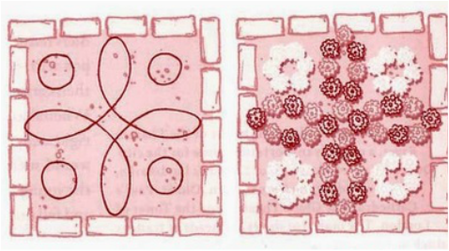
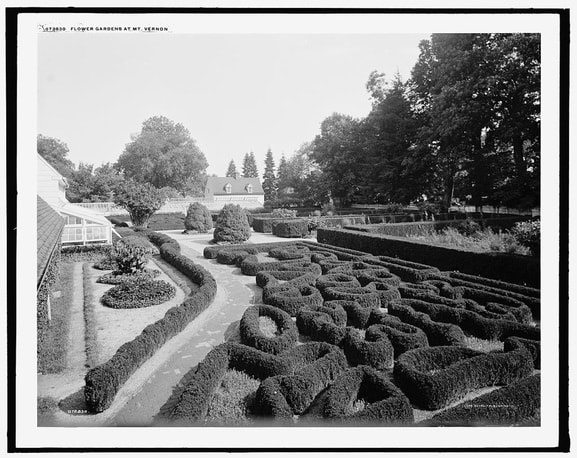
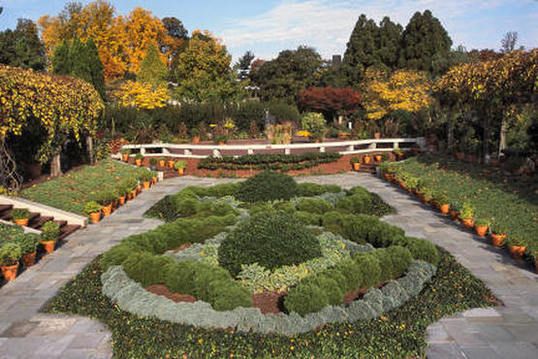



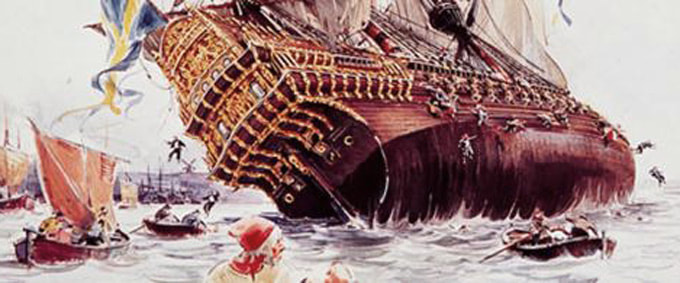

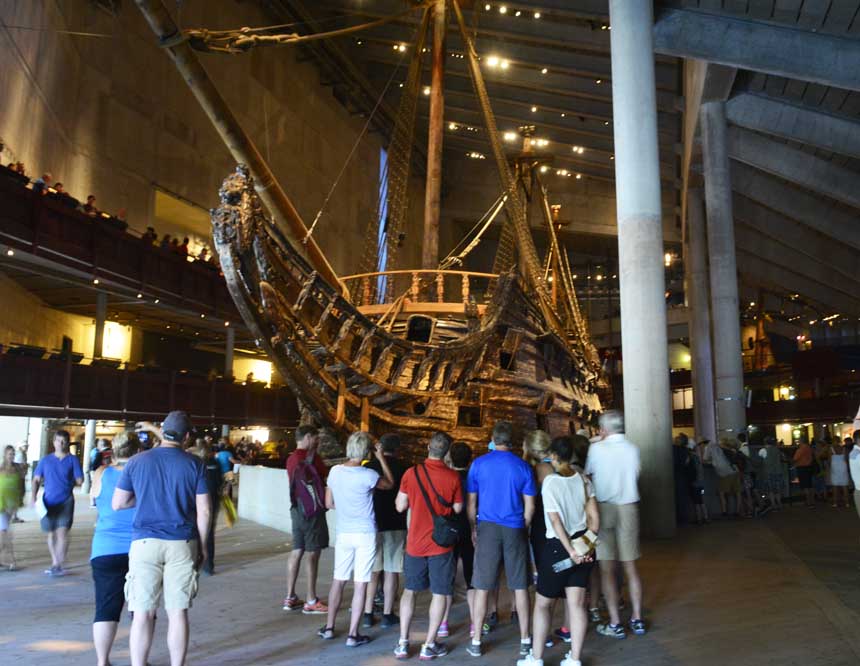




 RSS Feed
RSS Feed
